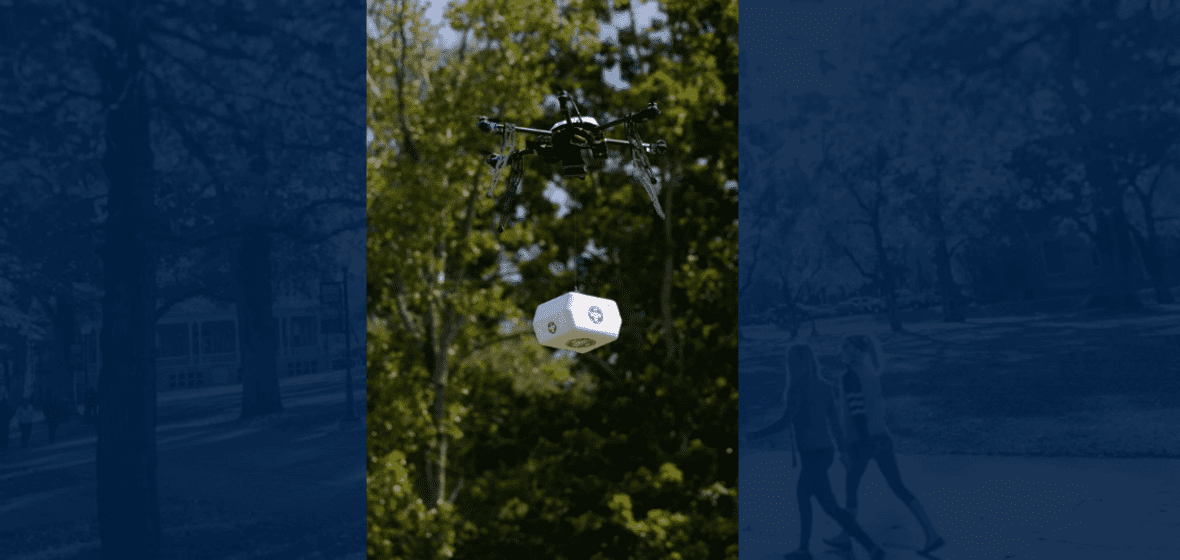From its beginnings as a start-up based on the University of Nevada, Reno campus, Flirtey went on to become the first unmanned-autonomous vehicle company to complete an FAA-approved delivery by drone on July 17, 2015. Now, the six-rotor drone that delivered medication to a rural medical clinic in Virginia has been accepted into the collection of the Smithsonian's National Air and Space Museum, which displays the Space Shuttle Discovery, the SR-71 Blackbird and the first aircraft operated by FedEx.
"Flirtey's delivery was the ‘Kitty Hawk moment' for the drone industry and it is fitting that our delivery drone will now be part of the same institution that displays the Wright Flyer," Flirtey CEO Matt Sweeny said.
The Flirtey story is an example of the University's commitment to advance development of autonomous systems and related industry through research, business incubation and workforce development. Flirtey landed on campus in 2014 and - in partnership with University researchers and students and supported by Sierra Angels, a Nevada angel investor group - the drone-delivery service completed its indoor, aerial tests and enhanced the capability of its drones in campus facilities.
Partnership research between the University and Flirtey continues. University researchers involved in a landmark, national project to develop new air-traffic-management systems worked with Flirtey to test concepts involving drones for more than a year. The University is one of a handful of organizations participating in the first phase of this NASA Ames Unmanned Aerial Systems Traffic Management project to enable safer use of low-altitude airspace, 500 feet and below, where autonomous aerial vehicles, helicopters, gliders and other general aircraft are operating.
Successful mission flights using software developed by the University group, in collaboration with the NASA Ames Research Center, were conducted at the Reno-Stead Airport in April 2016. The test was part of a milestone event that included 24 unmanned aircraft at six sites across the country.
Flirtey is also involved with University research exploring "sense and avoid" capabilities using sensor technology to enable aircraft to safely navigate in a dynamically changing air space.
"Work done in partnership between the University of Nevada, Reno and Flirtey has set the stage for a world in which unmanned aircraft safely occupy our skies, coexisting with manned aircraft and making a positive difference in people's lives," Richard Kelley, chief engineer for the Nevada Advanced Autonomous Systems Innovation Center, the University's autonomous robotic systems and intelligent machine research and industry collaboration, said. "This partnership demonstrates how Nevada's commitment to advanced technology and higher education is reinvigorating the state's economy and paving the way for a ‘New Nevada.'"
Relative to workforce development, the University's College of Engineering launched a minor degree in unmanned autonomous systems in 2014. In its quest to expand drone-delivery service in the United States, Flirtey also collaborates with the Virginia Tech Institute for Critical Technology and Applied Science, the Mid Atlantic Aviation Partnership, the NASA Langley Research Center, the Appalachian College of Pharmacy, the Business and Economic Development Office of Wise County and Virginia and other partners.
The Flirtey drone will be put on exhibit after it has been prepared for long-term display by museum collections specialists with the Smithsonian.











